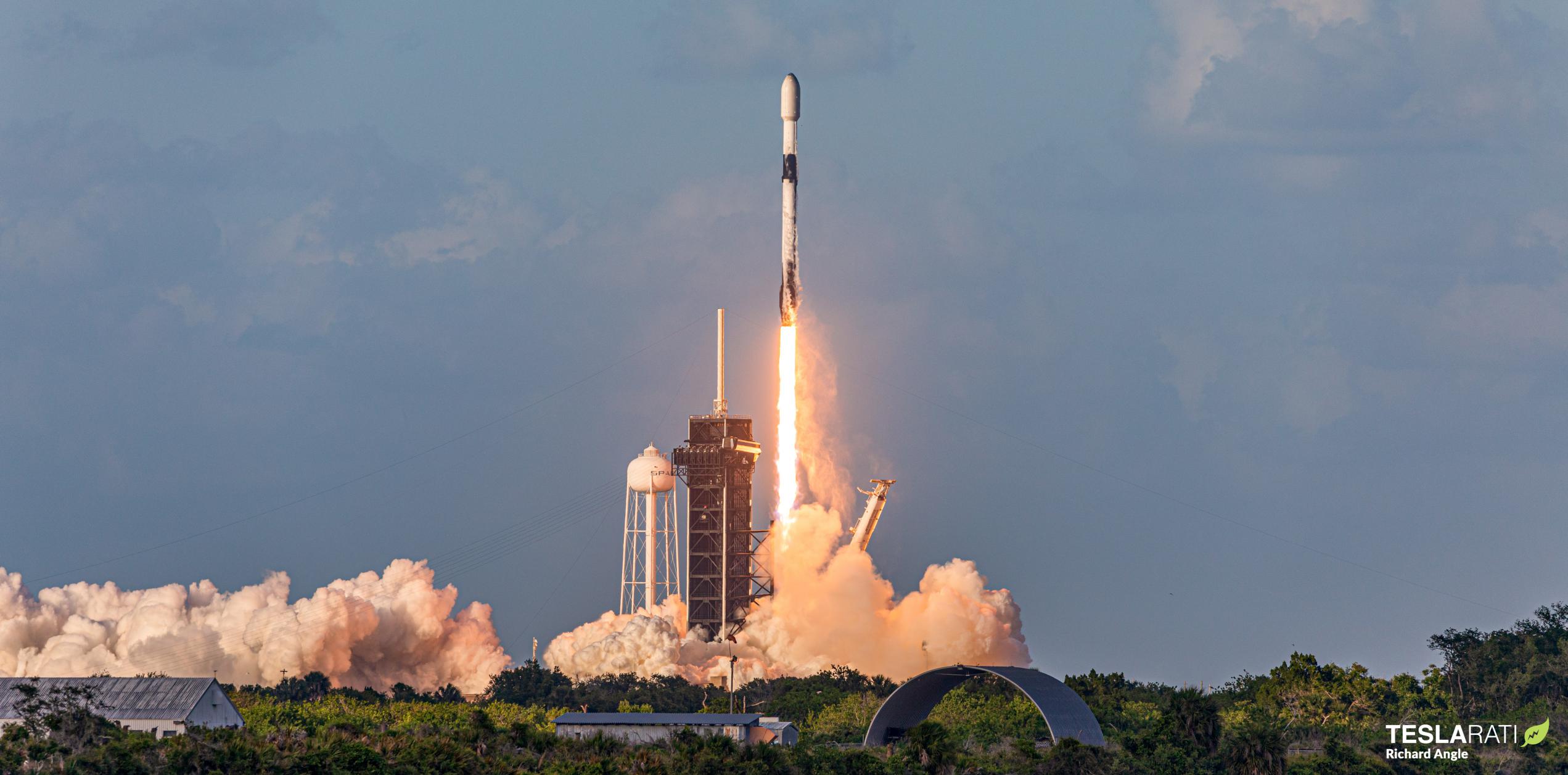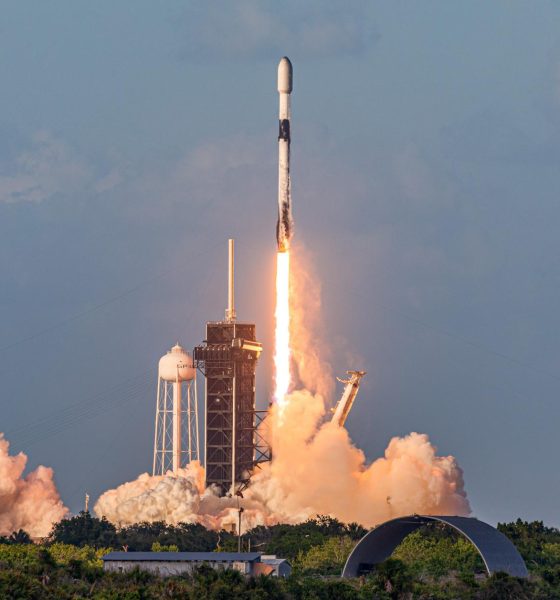After yesterday’s successful Starlink-26 launch, SpaceX is now more than half of the way to completing eight orbital Falcon 9 launches in six weeks.
On April 23rd, after a one-day delay for bad weather, SpaceX launched four astronauts on a flight-proven Falcon 9 booster – and in a flight-proven Dragon capsule – in a historic spaceflight first. Six days later, the company aced its 24th operational Starlink launch, followed by two more 60-satellite Starlink missions on May 4th and May 9th – the latter of which marked the first time a single Falcon 9 booster completed ten orbital-class launches. Finally, Falcon 9 completed yet another Starlink launch on May 15th – this time carrying 52 flat-packed internet satellites and two third-party payloads as part of SpaceX’s fourth Starlink rideshare mission.
However, after launching 234 satellites, four astronauts, and five Falcon 9s – and recovering all five boosters – in 22 days, SpaceX is far from finished.
Some two weeks ago, the bulk of SpaceX’s June launch manifest had already more or less fallen into place with three specific dates in the first half of the month. A few days prior to Starlink-26’s successful launch, what is likely SpaceX’s fourth and final launch of May 2021 also came into focus.
Unsurprisingly another Starlink mission, Starlink-28 is now scheduled to launch no earlier than (NET) 2:59 pm EDT (18:59 UTC) on May 26th – 11 days after Starlink-26. Of note, SpaceX has chosen Falcon 9 booster B1063 to support the mission. That booster debuted in November 2020 at California’s Vandenberg Air Force Base (VAFB) and was transported to Florida two months ago. Starlink-28 will be its second launch.
Up next, SiriusXM’s 7-ton SXM-8 radio satellite arrived at SpaceX’s payload integration facilities in Florida earlier this month and is scheduled to launch as early as 12:25 am EDT (4:25 UTC) on June 1st. The mission could slip a few days but is still likely to launch in early June.
Less than three days later, a rare new Falcon 9 booster could launch SpaceX’s second upgraded Cargo Dragon spacecraft – also new – on NASA’s CRS-22 space station resupply mission. Earlier today, NASA confirmed that the mission is on track to launch on June 3rd – likely around 1pm EDT (15:00 UTC).
If the weather, space station, and SpaceX’s rockets, spacecraft, and pad facilities cooperate, the completion of those three upcoming missions would mark eight successful Falcon 9 launches – carrying two Dragon spacecraft, four astronauts, and almost 300 satellites to orbit – in less than six weeks (41 days). If SpaceX manages that feat and averages one launch every five days, the company will have completed ~45% of its 2021 launches in ~26% of the year to date – a clear pattern of acceleration.
In the same period, a SpaceX Crew Dragon also safely returned four astronauts to Earth after the longest crewed spaceflight in US history (May 2nd) and the company successfully launched and landed a full-size Starship prototype for the first time (May 5th).

News
Elon Musk’s Grok AI to be used in U.S. War Department’s bespoke AI platform
The partnership aims to provide advanced capabilities to 3 million military and civilian personnel.

The U.S. Department of War announced Monday an agreement with Elon Musk’s xAI to embed the company’s frontier artificial intelligence systems, powered by the Grok family of models, into the department’s bespoke AI platform GenAI.mil.
The partnership aims to provide advanced capabilities to 3 million military and civilian personnel, with initial deployment targeted for early 2026 at Impact Level 5 (IL5) for secure handling of Controlled Unclassified Information.
xAI Integration
As noted by the War Department’s press release, GenAI.mil, its bespoke AI platform, will gain xAI for the Government’s suite of tools, which enable real-time global insights from the X platform for “decisive information advantage.” The rollout builds on xAI’s July launch of products for U.S. government customers, including federal, state, local, and national security use cases.
“Targeted for initial deployment in early 2026, this integration will allow all military and civilian personnel to use xAI’s capabilities at Impact Level 5 (IL5), enabling the secure handling of Controlled Unclassified Information (CUI) in daily workflows. Users will also gain access to real‑time global insights from the X platform, providing War Department personnel with a decisive information advantage,” the Department of War wrote in a press release.
Strategic advantages
The deal marks another step in the Department of War’s efforts to use cutting-edge AI in its operations. xAI, for its part, highlighted that its tools can support administrative tasks at the federal, state and local levels, as well as “critical mission use cases” at the front line of military operations.
“The War Department will continue scaling an AI ecosystem built for speed, security, and decision superiority. Newly IL5-certified capabilities will empower every aspect of the Department’s workforce, turning AI into a daily operational asset. This announcement marks another milestone in America’s AI revolution, and the War Department is driving that momentum forward,” the War Department noted.
News
Tesla FSD (Supervised) v14.2.2 starts rolling out
The update focuses on smoother real-world performance, better obstacle awareness, and precise end-of-trip routing, among other improvements.

Tesla has started rolling out Full Self-Driving (Supervised) v14.2.2, bringing further refinements to its most advanced driver-assist system. The new FSD update focuses on smoother real-world performance, better obstacle awareness, and precise end-of-trip routing, among other improvements.
Key FSD v14.2.2 improvements
As noted by Not a Tesla App, FSD v14.2.2 upgrades the vision encoder neural network with higher resolution features, enhancing detection of emergency vehicles, road obstacles, and human gestures. New Arrival Options let users select preferred drop-off styles, such as Parking Lot, Street, Driveway, Parking Garage, or Curbside, with the navigation pin automatically adjusting to the user’s ideal spot for precision.
Other additions include pulling over for emergency vehicles, real-time vision-based detours for blocked roads, improved gate and debris handling, and extreme Speed Profiles for customized driving styles. Reliability gains cover fault recovery, residue alerts on the windshield, and automatic narrow-field camera washing for new 2026 Model Y units.
FSD v14.2.2 also boosts unprotected turns, lane changes, cut-ins, and school bus scenarios, among other things. Tesla also noted that users’ FSD statistics will be saved under Controls > Autopilot, which should help drivers easily view how much they are using FSD in their daily drives.
Key FSD v14.2.2 release notes
Full Self-Driving (Supervised) v14.2.2 includes:
- Upgraded the neural network vision encoder, leveraging higher resolution features to further improve scenarios like handling emergency vehicles, obstacles on the road, and human gestures.
- Added Arrival Options for you to select where FSD should park: in a Parking Lot, on the Street, in a Driveway, in a Parking Garage, or at the Curbside.
- Added handling to pull over or yield for emergency vehicles (e.g. police cars, fire trucks, ambulances).
- Added navigation and routing into the vision-based neural network for real-time handling of blocked roads and detours.
- Added additional Speed Profile to further customize driving style preference.
- Improved handling for static and dynamic gates.
- Improved offsetting for road debris (e.g. tires, tree branches, boxes).
- Improve handling of several scenarios, including unprotected turns, lane changes, vehicle cut-ins, and school buses.
- Improved FSD’s ability to manage system faults and recover smoothly from degraded operation for enhanced reliability.
- Added alerting for residue build-up on interior windshield that may impact front camera visibility. If affected, visit Service for cleaning!
- Added automatic narrow field washing to provide rapid and efficient front camera self-cleaning, and optimize aerodynamics wash at higher vehicle speed.
- Camera visibility can lead to increased attention monitoring sensitivity.
Upcoming Improvements:
- Overall smoothness and sentience.
- Parking spot selection and parking quality.
News
Tesla is not sparing any expense in ensuring the Cybercab is safe
Images shared by the longtime watcher showed 16 Cybercab prototypes parked near Giga Texas’ dedicated crash test facility.

The Tesla Cybercab could very well be the safest taxi on the road when it is released and deployed for public use. This was, at least, hinted at by the intensive safety tests that Tesla seems to be putting the autonomous two-seater through at its Giga Texas crash test facility.
Intensive crash tests
As per recent images from longtime Giga Texas watcher and drone operator Joe Tegtmeyer, Tesla seems to be very busy crash testing Cybercab units. Images shared by the longtime watcher showed 16 Cybercab prototypes parked near Giga Texas’ dedicated crash test facility just before the holidays.
Tegtmeyer’s aerial photos showed the prototypes clustered outside the factory’s testing building. Some uncovered Cybercabs showed notable damage and one even had its airbags engaged. With Cybercab production expected to start in about 130 days, it appears that Tesla is very busy ensuring that its autonomous two-seater ends up becoming the safest taxi on public roads.
Prioritizing safety
With no human driver controls, the Cybercab demands exceptional active and passive safety systems to protect occupants in any scenario. Considering Tesla’s reputation, it is then understandable that the company seems to be sparing no expense in ensuring that the Cybercab is as safe as possible.
Tesla’s focus on safety was recently highlighted when the Cybertruck achieved a Top Safety Pick+ rating from the Insurance Institute for Highway Safety (IIHS). This was a notable victory for the Cybertruck as critics have long claimed that the vehicle will be one of, if not the, most unsafe truck on the road due to its appearance. The vehicle’s Top Safety Pick+ rating, if any, simply proved that Tesla never neglects to make its cars as safe as possible, and that definitely includes the Cybercab.










